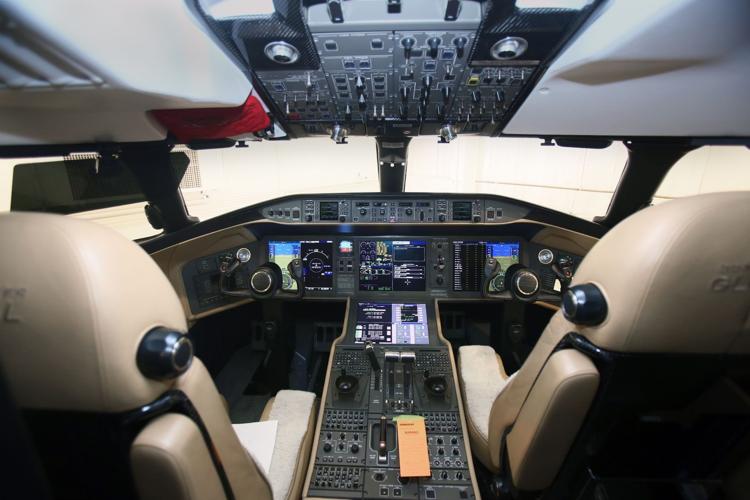Montreal-based Bombardier Aerospace is celebrating its 40th year in Tucson, dating back to when Gates Learjet launched operations here in 1976.
With more than a million square feet of hangared space, the Tucson facility is the largest of Bombardier’s nine aircraft service centers worldwide.
It houses two separate maintenance operations — one for business jets like Learjet models and medium-sized Challenger and Global Express jets, and another for commercial aircraft like Bombardier’s CRJ-series regional jets and Q400 series turboprops.
Business-jet services provided at the Tucson center include scheduled and unscheduled maintenance, modifications including interior mods, full paint capabilities and avionics installations.
Employment at the Tucson service-center operations at Tucson International Airport has risen and fallen with the fortunes of the aviation industry.
But Bombardier, which acquired Learjet in 1990, has added hundreds of jobs in recent years and now employs nearly 1,000 people here.
“Bombardier is continually looking at opportunities to expand its customer services footprint,” said Tim McGuire, general manager of the Tucson business-aircraft operation in Tucson, adding that recently announced global cutbacks “are not affecting Bombardier’s Tucson facility.”
“We are managing the business prudently and continue to hire skilled technicians as our in-service fleet grows,” he said.
McGuire said Tucson is a great place for aviation maintenance because of its location and year-round flying weather, and he cited Bombardier’s longstanding partnership with Tucson International Airport and its employees — “some of whom have been with us since the very start.”
Bombardier in Tucson
1976: Learjet opens an aircraft finishing plant at Tucson International Airport.
1981: Local Learjet operations peak at 2,800 employees.
1987: A sour economy causes a plunge in corporate interest in private jets, driving Learjet almost into the ground.
1990: Montreal-based Bombardier buys Learjet, which by then has only 200 Tucson employees.
1999: Bombardier invests $40 million in facilities, equipment and training in the Tucson operation, which the company transforms into a “center of excellence” for completion work.
2001: Local operations peak with 2,250 employees, who finish approximately 200 aircraft.
2002: A sharp decrease in demand for business jets hits Bombardier hard. In January, the local plant announces plans to lay off 550 employees during the year.
2003: Bombardier announces a consolidation plan designed to save $25 million a year by building and finishing aircraft in the same location, including plans to move 800 jobs from Tucson to Wichita, Kansas. But the company also announces plans to open a new service center in Tucson for regional jets.
2006: As it marks its 30th year in Tucson, Bombardier employs 650 people here in maintenance work, aircraft refurbishing, painting and interior installations. Bombardier extends its lease with the Tucson Airport Authority 22 years, until 2028.
2007-2009: Employment at Bombardier’s Tucson operations hovers around 600 through the Great Recession.
2010: Bombardier begins to grow in Tucson again, adding about 40 jobs.
2012-13: The company boosts its local workforce by nearly 200, to more than 900 by the end of 2013. Federal stimulus funds are used to build a fence to separate Bombardier from the airport property, so employees don’t have to undergo airport security checks.
2014: In July, Bombardier announces it will lay off about 1,800 employees companywide. The company reports about 50 fewer workers in Tucson that year, for a total local workforce of 865.
2015: Bombardier plans a $1.5 million renovation of its Tucson aircraft interior refurbishing and customization shop. The company boosts its local workforce to 984 workers by year-end, driven by increased fleet-customer maintenance and modification work at its commercial aircraft operations.








